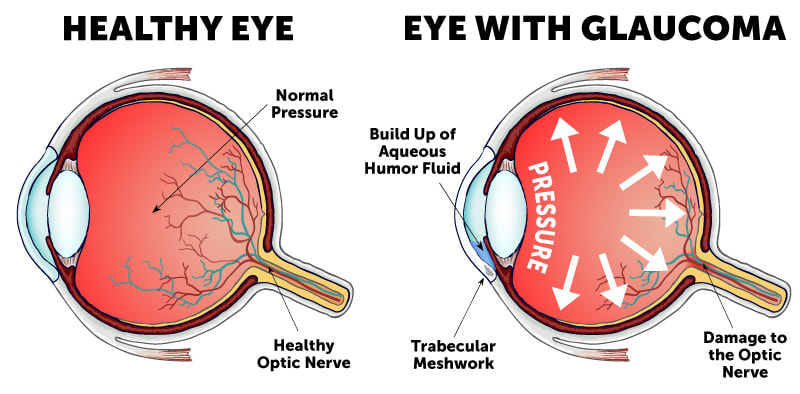Advanced Refractive Surgeries in AL: Very Clear Eyesight Without Glasses
Advanced Refractive Surgeries in AL: Very Clear Eyesight Without Glasses
Blog Article
Comprehending the Different Vision Adjustment Procedures Available for Clearer View
In the realm of vision correction treatments, a wide variety of alternatives exist to address refractive mistakes and give individuals with more clear view. Allow's check out the complexities of these procedures and shed light on the path to accomplishing enhanced vision clarity.
LASIK Surgery
LASIK surgical procedure is a typical refractive treatment utilized to deal with vision issues such as astigmatism, farsightedness, and nearsightedness. This surgical strategy, which stands for Laser-Assisted in Situ Keratomileusis, aims to reshape the cornea to boost how light is concentrated on the retina, ultimately improving vision quality.
One of the main advantages of LASIK surgery is the fast renovation in vision experienced by clients. Several individuals observe a significant enhancement in their sight right away after the procedure. Furthermore, a lot of people report marginal pain and pain during the surgery and recuperation duration. The healing time for LASIK is relatively quick, with numerous individuals returning to their everyday tasks within a day or 2 post-operation. Generally, LASIK surgical procedure is a preferred choice for individuals looking for a lasting solution for their vision problems.
PRK Treatment
While likewise a common refractive procedure, the PRK (Photorefractive Keratectomy) technique differs from LASIK surgical treatment in its approach to remedying vision issues. In PRK, rather than producing a flap on the cornea, the outer layer of the cornea, called the epithelium, is entirely gotten rid of. This enables the laser to improve the cornea to fix refractive mistakes such as nearsightedness, astigmatism, and farsightedness directly on the surface area.

Despite the longer recuperation time, PRK can generate outstanding lead to vision improvement, making it an important option for those that may not appropriate candidates for LASIK surgery.
Implantable Lenses
In comparison to PRK where the cornea is reshaped directly, implantable lenses provide one more approach for fixing vision by putting synthetic lenses inside the eye. This procedure is especially useful for individuals with high degrees of nearsightedness, astigmatism, or farsightedness that may not be suitable candidates for laser surgical procedures like LASIK or PRK.
Implantable lenses, additionally referred to as phakic intraocular lenses, work by supplementing the eye's natural lens with an artificial one. refractive surgeries in al. These lenses can be placed before the all-natural lens (former chamber) or behind the iris and before the all-natural lens (posterior chamber) By readjusting the power and positioning of these lenses, ophthalmologists can successfully remedy refractive article source errors and improve aesthetic skill
One advantage of implantable lenses is that they are removable and exchangeable, giving flexibility for future modifications. As with any kind of surgical procedure, there are dangers included, such as infection or cataract formation. Clients taking into consideration implantable lenses must seek advice from an eye care expert to identify one of the most appropriate choice based upon their individual requirements and eye health.
Corneal Rings
Corneal rings, additionally called intracorneal ring segments, are tiny, transparent tools put into the cornea to deal with vision distortions such as keratoconus. Keratoconus is a condition where the cornea thins and protrudes external, causing vision to end up being altered. The insertion of corneal rings helps to squash the cornea, enhancing aesthetic acuity and reducing the uneven astigmatism triggered by keratoconus.
The treatment for inserting corneal rings is relatively quick and minimally invasive, usually performed as an outpatient treatment. Throughout the surgical treatment, the ophthalmologist makes a tiny incision in the cornea and inserts the rings at a particular deepness. When in position, the rings help to reshape the cornea, offering a smoother surface for light to go into the eye, which can lead to more clear vision.
Corneal rings are considered a relatively easy to fix see post procedure, as they can be eliminated or replaced if required. glaucoma service near me. While they may not totally eliminate the need for glasses or contact lenses, corneal rings can substantially improve vision quality and total aesthetic comfort for individuals with keratoconus or other corneal abnormalities
Refractive Lens Exchange
Following the improvement of corneal abnormalities with procedures like corneal rings, one more vision modification method that can address refractive errors is Refractive Lens Exchange (RLE) RLE is an operation that involves changing the eye's natural lens with a synthetic intraocular lens (IOL) to fix refractive errors such as farsightedness, presbyopia, and nearsightedness. This treatment is especially valuable for individuals who might not appropriate prospects for procedures like LASIK or PRK as a result of elements such as slim corneas or high refractive mistakes.

Verdict
Finally, there are different vision modification treatments available to assist people achieve clearer sight. LASIK surgical treatment, PRK treatment, implantable lenses, corneal rings, and refractive lens exchange are all options that can deal with moved here various vision problems. It is necessary for people to speak with their eye treatment provider to identify the most ideal treatment based upon their details requirements and preferences. With developments in innovation, accomplishing enhanced vision is now extra obtainable than ever.
In the world of vision modification treatments, a plethora of choices exist to attend to refractive errors and give individuals with more clear view.LASIK surgical treatment is a typical refractive treatment used to correct vision troubles such as farsightedness, astigmatism, and nearsightedness.While also a common refractive procedure, the PRK (Photorefractive Keratectomy) strategy varies from LASIK surgery in its approach to dealing with vision issues.Adhering to the modification of corneal irregularities with treatments like corneal rings, one more vision correction method that can attend to refractive errors is Refractive Lens Exchange (RLE) LASIK surgical procedure, PRK procedure, implantable lenses, corneal rings, and refractive lens exchange are all alternatives that can resolve various vision problems.
Report this page